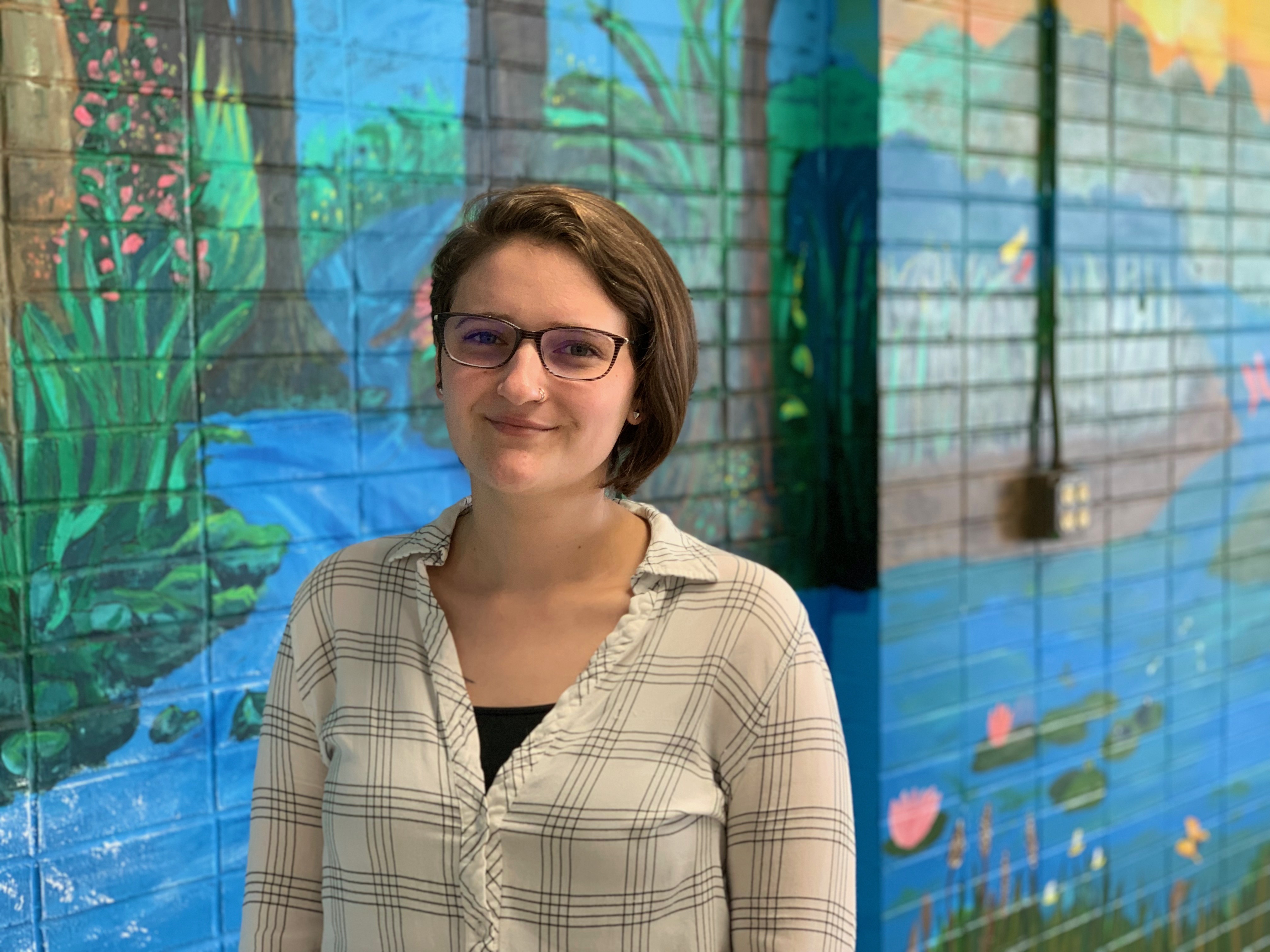College of Liberal Arts & Sciences
Taking on the challenge of reducing medical waste

Nearly half of the University of Iowa’s waste comes from UI Hospitals and Clinics.
Providing over 1 million patients each year with medical care and serving 9,000 meals a day, the hospital sends a significant amount of waste to the landfill — 34 percent of which has the potential to be reduced. These include things like drinks in styrofoam cups for patients, or plastic bags provided at convenience stores.
UI senior Claire Jacobmeyer has spent the last year working as the UI Office of Sustainability and the Environment project intern for waste reduction at UI Hospitals and Clinics. Her challenge has been to find ways to reduce waste at an institution that relies on single-use products to remain sanitary for patient safety and health.
“There’s this myth that waste reduction isn’t possible because of the kind of services hospitals are providing,” she said. “But I think if hospitals were taking a closer look, they’d be able to find opportunities. Things can be recycled or composted, or just not exist in the first place.”
One of these areas is trash bin liners. Single rooms might have four or more trash cans that are emptied daily, including the liner — even if only one tissue has been tossed — for sanitary reasons. An analysis of the waste stream through UI Hospitals and Clinics conducted by Jacobmeyer revealed that 11 percent of all the hospital’s waste was trash can liners. This percentage could be drastically reduced simply by consolidating and reducing the number of bins throughout the hospitals.
Other areas that Jacobmeyer and the hospital are working on to reduce waste is expanding the composting program outside of the cafeterias, increasing the number of recycling bins, and increasing employee engagement with waste reduction efforts.
During her time immersing herself in waste reduction at the UI Hospitals and Clinics, Jacobmeyer found that hospital staff has a desire to make changes in their workplace, they just might not know how. Jacobmeyer wants to make education and resources a focus of her work. This includes creating leadership infrastructure and a sustainability website available to support all staff.
“I would like to see the hospitals be a leader in medical sustainability,” she said. “I think it’s possible. They’re leader in a lot of other areas, so why not that?”